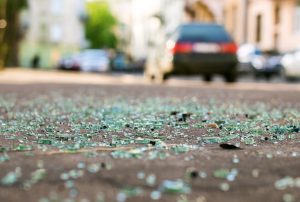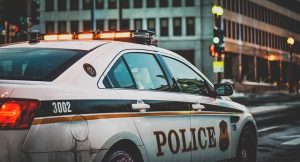
When vehicles collide, the ethical thing for drivers to do is to pull over and make sure everyone is safe. This is not only common courtesy, but also required by law.
Call today for free consultation (877)-987-9LAW
Recovering from a hit and run collision is difficult and it can be a confusing process to navigate. Most victims want justice but the perpetrator has fled the scene of the crime, making justice and criminal charges difficult or impossible to achieve.
The Flood Law Firm covers some basic information for hit and run defense victims. If you have been seriously hurt, you may need to consult a hit and run lawyer for your case. The topics covered in this article include the following:
- About Hit and Run Car Accidents
- I Was in a Hit and Run Accident, What Do I Do Now?
- What Are the Consequences of a Hit and Run Accident?
- Contact The Flood Law Firm
No matter how careful you are to obey traffic laws, some car crashes happen through no fault of your own. Consult our injury attorneys on how you can achieve recovery in these difficult circumstances. We have helped many hit and run victims who share the shock and pain you are experiencing now. Let us help you get back on your feet—call The Flood Law Firm for a no-cost discussion of your legal rights.
About Hit and Run Car Accidents
There are two main types of hit and run accidents.
- Crashes that involve other participants (other drivers, pedestrians, non-motorized vehicles)
- Crashes that involve unattended vehicles
In either of these cases, if someone hits you or your vehicle, normally the driver will pull over and take the next steps to file a report of the crash. But some people choose to illegally flee the scene of a collision.
While understanding the frame of mind of a driver who leaves the scene of an accident may not help a victim achieve any sense of justice, it may help some victims to find closure to the event and move onto the recovery process.
There are a number of reasons why the person who caused the damages may be motivated to leave the scene of a crash.
- Sometimes the driver is intoxicated or under the influence of drugs, and thus he or she does not respond rationally.
- Alternatively, someone driving under the influence may understand what has occurred but flee the scene of an accident out of fear that being caught.
- A hit-and-run driver might be in possession of something illegal in the car, like drugs or weapons, and be afraid to get caught. They might also have prior infractions—anything from an expired license to an on-parole status to an outstanding warrant—that causes them to fear a confrontation with police and leave the scene.
Hit and run accidents do not always mean bodily harm and are not limited to traffic collisions between two vehicles. Grazing or striking an unoccupied car parked on a curb or in a parking lot also counts as a hit and run incident.
- Some people justify leaving the scene because they could not wait for the vehicle owner to return. But in this case, hit and run laws still apply if the driver fails to leave their contact information behind for the parked car’s owner.
Studies on the behavior of hit-and-run drivers have indicated that regardless of any external motivations, these drivers largely share one characteristic: guilt and shame. The genuine shock and remorse they feel after causing harm to another driver, combined with immaturity or fear about the consequences of getting caught, is a powerful motivation for some culprits to evade responsibility.
What these drivers fail to grasp is that fleeing only increases the harm caused by their actions. Regardless of their circumstances, leaving the scene of a car accident only makes everything worse — for themselves and for the person they have hit.
Hit and Run Accidents: What Do I Do Now?
Whether you experience a hit-and-run in traffic, or return from an errand to find your car damaged by a hit and run collision, the shock and stress are hard to process.
Once you have called an ambulance (if necessary) and attended to any injuries you might have, you should immediately begin documenting as much information as you can. This will not only be helpful in making the claim with your car insurance, but it will also increase the chances that the police are able to catch the driver who left the scene of the collision.

Checklist: What to Do After a Hit and Run Accident
Write down as many details as possible about the car who hit you:
- License plate number
- Make
- Model
- Color
- Size
In addition, look for any possible witnesses to the hit and run accident and get their contact information.
- Write down the time and location of your accident.
- Take photos of the scene, including any marks on the pavement, grass, etc.
- Take photos of damage to your vehicle, especially if the other car’s paint is visible
When issuing your hit-and-run report, it’s important to be aware that some insurance companies are slow to process these kind of claims, based on the frequency of drivers making fraudulent hit-and-run claims in order to collect a payout.
Law enforcement can sometimes take a laissez-faire attitude toward hit-and-run reports, due to the difficulty of investigating them. Despite the seriousness that a hit and run event may have, police departments generally have a poor record of catching the driver.
If you want to see justice done in your hit and run accident, your best option is to follow a few simple tips and work with experienced hit and run lawyers familiar with auto injury claims who will fight for your rights.
What Are the Consequences of a Hit and Run Accident?
The penalty for felony hit-and-run accidents is severe in all 50 states.
Connecticut state law calls for license suspension and jail time for some hit-and-run drivers. Depending on the severity of damages and injuries, the violation is classified as either a misdemeanor (with a jail term of up to one year) or a felony (with up to 10 years of jail time).
On the other side of the coin, the victim may suffer injuries that may be worsened due to the circumstances. If the hurt person is not able to call for help on his or her own, the victim may be stranded for a long time without emergency services. Studies show that this delay in medical help increases the likelihood of serious injuries and even fatalities after a hit-and-run event. It is for these reasons that Connecticut is hard on drivers who evade responsibility after a car crash.
Outside of the physical harm they cause, hit and run car claims may include a long waiting period before payments are made to the victim. In some cases, insurance companies drag their feet in processing the full amount of funding needed for recovery. The reason may be due to their inability to sue another insurance company to recoup the cost of the accident. However, you have the right to obtain financial compensation for your losses if your insurance policy provides for uninsured motorist coverage.
Contact The Flood Law Firm Today If You've Been Injured in a Hit & Run Car Accident
At The Flood Law Firm, we are committed to fighting for justice on behalf of those who suffer injury and damage from hit and run accidents. If you have suffered from a hit-and-run accident, contact our car accident lawyers today to discuss your legal options. Don’t let the actions of someone else define you as a victim. Let us help ensure that insurance companies and the legal system honor your rights.
